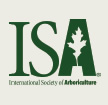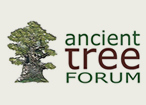There can be a vast difference between the techniques and practices of professional arborists and those of inadequately trained tree workers who simply "trim trees". Some commonly offered "services" are considered unacceptable by modern arboricultural standards and may seriously damage, disfigure, weaken, or even kill trees. One such example is tree topping, lopping, where entire tops of trees or main stems are removed leaving large unsightly stubs.
Trees that manage to survive such treatment are left prone to a variety of detrimental effects, including vigorous but weakly attached regrowth, susceptibility to pests and fungal or bacterial infection and internal decay. We are dedicated and experienced in doing the best for your tree's long term health, whilst achieving the result you want.
Tree pruning
Crown lifting: This involves pruning to achieve a desired vertical clearance above ground level to improve usage under the tree. Good practice dictates crown lifting should not normally include the removal of large branches growing directly from the trunk as this causes large wounds which may jeopardise the long term future of the tree. Common reasons for crown lifting are to provide more light & space under the tree, clearance from buildings, pedestrian and vehicle access, notices and lines of sight.
Crown Reduction: Used to reduce the height and/or spread of the crown of a tree by the removal of the ends of branches whilst maintaining the tree's natural shape as far as feasible.
Crown Clean: The removal of overcrowded, dead, diseased, broken, weakly attached and low-vigour branches and can include climbing plants such as Ivy. This is the most common procedure for maintaining landscape trees
Selective Pruning and Pruning for infrastructure: In order to prevent trees from interfering with the efficient and safe use of infrastructure, pruning for clearance may be required. Objectives might include the removal or pruning of branches from a specific part of the crown interfering with buildings, landscape features or other structures and overhead utilities such as electricity cables.
Tree felling
Trees which have become weakened, diseased, hazardous or a nuisance may need to be felled. It may be the roots are undermining or influencing nearby structures or that the tree has simply out grown the confines of its location. We have all the specialist equipment and the experience to fell trees safely, but also provide free advice about whether it is the best option for you and for the tree.
Tree planting
If you are considering adding a new tree, or replacing one in ill health, we can source the right tree for the position first time, so you are reassured of a healthy tree for years to come. We take into account the soil and all the surroundings as well as the attributes of each species to help you make an informed decision.
Planning consent from Local Authorities
Before carrying out any work on your trees, we will check that they are not subject to Tree Preservation Orders (TPO) or located within a Conservation Area and if they are, we will liaise with the local authority on your behalf as agent to gain the necessary consent. We pride ourselves on the professional long standing relationships we have built with the Tree Officers and landscape officers across all Oxfordshire districts over the years.










